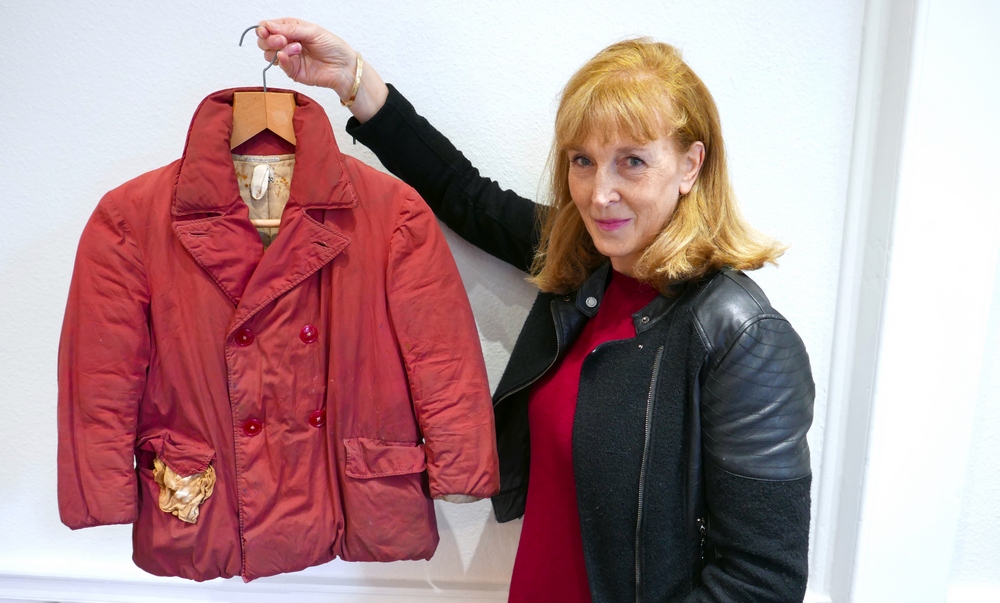The City of Benares and a red jacket
Out of all of the things exhibited in our small but interesting museum, there is an item that often catches attention of our visitors, and not because of its beauty or its famous owner, but because this object has an unusual story. The item we are talking about is in fact, a jacket. A very common and normal looking jacket, one like many others, that could have been owned by anyone.
But this jacket deserves to be remembered, as it is a very special one, because it has not only kept someone warm, it has really saved a life!

The story of the red jacket and its owner, Colin Ryder-Richardson begins in 1940, and is linked to a steam passenger ship called the SS City of Benares. This was a quite small ship with a capacity of just 219 passengers and one single class, but still very new, as it was in service for just 4 years during its whole life. Initially used as a normal passenger ship, at the beginning of World War Two, the City of Benares was inserted in the convoy OB-213 by the CORB (Children’s Overseas Reception Board) and used as an evacuee ship for children. The fear of a sudden invasion of Britain by Germany led to the creation of an overseas evacuation scheme sponsored by the government. The aim of the project was to take children from Britain to Canada during the period of the war, to protect them from a possible invasion or attack. Children would have been looked after by adult escorts (1 for every 15 children) during the voyage, but their parents were not allowed to go with them.
In the early morning of Friday 13 September 1940, the City of Benares set sail from Liverpool, together with the other 18 vessels and their protection naval escort, and operated as the lead ship. This was City of Benares’ first and last Atlantic crossing.
On board the ship were 90 children, which together with 11 members of CORB staff, another 91 passengers and 203 crew members, making a total of 406 people on board. One of the children was Colin Ryder-Richardson, an 11-year-old travelling alone. His younger brother had been considered too young to travel and was rejected by the scheme.

Colin’s daughter, Sarah, has told us everything she can remember about her father’s story, told to her directly by him. She told us that her grandmother, before his leaving, procured her father a bright red, padded kapok lifejacket, with long sleeves and deep pockets. She put a glove into each pocket and also knitted him a balaclava. It was designed for flotation, but also to keep extreme warmth, ideal for a trip across the icy Atlantic. She forbid him to take it off until he reached Canada, including sleeping in it. While on board, due to his red jacket, he was given the nick-name of Will Scarlet.
Three days after the departure, on the 17th September, while halfway to Canada, they discovered that the naval escort had disappeared, leaving them more vulnerable. That night, at 00.01am on 18th September, while children were sleeping in their beds, a German U-boat fired a torpedo against the City of Benares and struck the ship in its stern. Colin, who was reading some comics in his bed when the attack happened, was wearing his red jacket as always. He got up and ran to the lifeboat station to wait for instructions together with all the other children. The other children were less lucky than him, wearing just their pyjamas, they had no protection against cold weather as life jackets were only made of blocks of corks held together by a rope.
The ship was abandoned fifteen minutes after the torpedo hit and sank 30 minutes later. “Only two of the ship’s lifeboats were seaworthy. My unlucky father found himself chest deep in water, launched in a submerged lifeboat, only the air tanks under the seats kept it from sinking completely”, recalled Sarah. It was then when Colin put his hands in his lifejacket’s pockets and found the gloves his mother gave him that helped him to grip on the wooden seat beneath him. He wrapped his legs around the seats as every wave threatened him to sweep him out of the boat.
Colin and the other survivors of the City of Benares stayed in the lifeboat for two days, while many others died around them. “He tried hard to keep the spirits of the boat up and cradled an elderly nurse keeping her head above water and reassuring her that help was coming, until finally she died in his arms”, Sarah remembers.
The destroyer HMS Hurricane arrived 24 hours later and picked up 105 survivors from the lifeboats, apart from one which was initially dispersed and rescued eight days later. When Colin was eventually saved, he was so cold that he could barely move or talk. The Hurricane crew lowered some ropes and he was gently raised to the deck of the warship. He was the only surviving child in his lifeboat. Survivors were then transported to Greenock, Scotland. Of the 90 children on board, just 13 survived, including Colin. For his courage he was honoured, at the age of 11, the King’s Medal for Brave Conduct in the Merchant Navy; the youngest person ever to receive this honour.
Following this tragedy the Government decided to stop the overseas evacuee programme.
As his daughter says, Colin owes his life to his mother’s love and the red jacket she modified for him.
Egham Museum is excited to learn from Sarah Watson that American author, Deborah Heiligman is writing a children’s book on the story, titled Torpedoed: The True Story of the Sinking of the S.S. City of Benares available to purchase from 8th October 2019. Read Deborah’s guest blog-post written for the Merseyside Maritime Museum in Liverpool.

